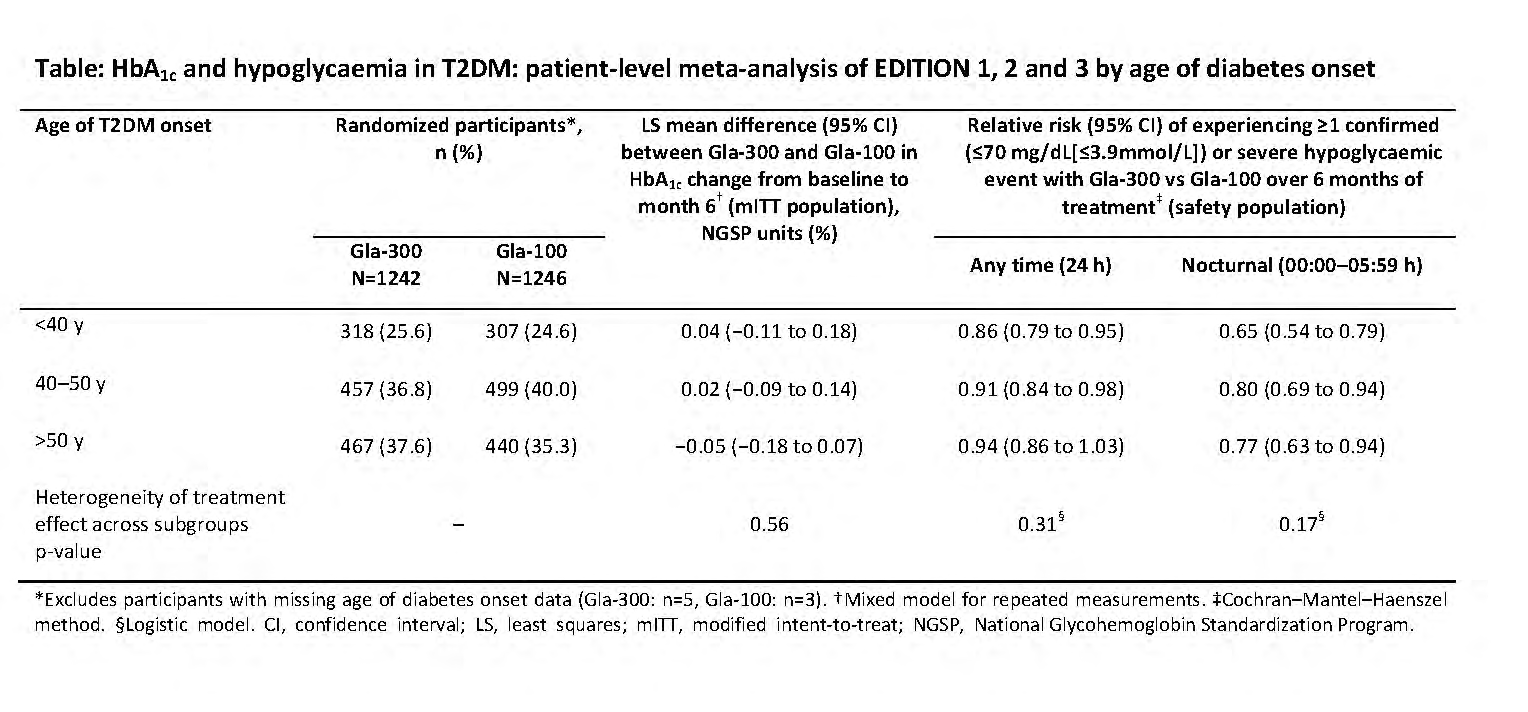Poster Presentation Australian Diabetes Society and the Australian Diabetes Educators Association Annual Scientific Meeting 2016
Age of diabetes onset: glycaemic control and hypoglycaemia benefit with new insulin glargine 300 U/mL in T2DM (#255)
Introduction and objectives: In people with T2DM treated with basal insulin + mealtime insulin (EDITION 1), basal insulin + oral antihyperglycaemic drugs (OADs, EDITION 2), or OADs and insulin-naïve (EDITION 3), switching to or starting with insulin glargine 300 U/mL (Gla-300) provided comparable glycaemic control to glargine 100 U/mL (Gla-100) and less hypoglycaemia, over 6 months of treatment. This post-hoc analysis investigated the effect of age of diabetes onset on these outcomes.
Method: Patient-level meta-analysis of efficacy and safety outcomes by age of diabetes onset subgroup (50 y) for participants in EDITION 1, 2 and 3 over 6 months of treatment.
Results: Mean duration of diabetes was lower with later diabetes onset (onset age 50 y: 9.5 y and 9.5 y for Gla-300 and Gla-100, respectively). HbA1c reduction was comparable between the Gla-300 and Gla-100 groups regardless of age of diabetes onset (no evidence of heterogeneity of treatment effect across subgroups, p=0.56) (Table). The benefit of Gla-300 in terms of lower risk of confirmed (≤70 mg/dL [≤3.9mmol/L]) or severe hypoglycaemia at any time of day (24 h) and during the night (00:00–05:59 h) vs Gla-100 was consistently seen regardless of age of diabetes onset (Table).
Conclusion: Starting with or switching to Gla-300 provided comparable glycaemic control with less hypoglycaemia vs Gla-100, regardless of age of diabetes onset.
Disclosures: Data previously presented at IDF World Diabetes Congress (2015), Vancouver, Canada. Studies sponsored by Sanofi (NCT01499082, NCT01499095, NCT01676220). This analysis was funded by Sanofi. Editorial assistance (Scriptix Pty Ltd) was funded by Sanofi Australia Pty Ltd.
